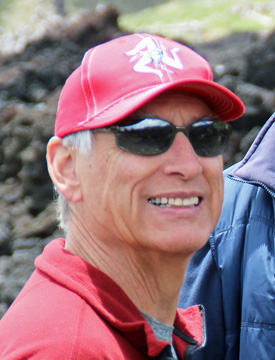|
For over a century, space travel enthusiasts dreamt of cutting fuel costs by devising a space elevator to lift astronauts and cargo beyond the height of a geosynchronous orbit, where the centrifugal outward force balances gravity’s inward force.
Earth’s geosynchronous orbit is at an altitude of 22,236 miles (35,786 km). From there, travel to more distant destinations is dramatically cheaper. However, a tower of that height, built of any known materials, would be crushed by its own weight.
People turned next to the space tether, a cable secured to Earth that rises higher than the geosynchronous orbit. With a sufficient mass at the cable’s top, the centrifugal and gravitational forces balance. However, the sum of those forces subjects the cable to extreme tension. Space tethers are also impossible with current materials.
Astronomers Zephyer Penoyre of the University of Cambridge, U.K., and Emily Sandford of Columbia University, N.Y., now propose Spaceline, a cable attached to the Moon hanging down to Earth’s geosynchronous orbit, “Rgeo” in this drawing.

Since the Moon’s gravity is 1/6th of Earth’s, Penoyre and Sandford say Spaceline is feasible with existing materials.
They estimate Spaceline would be 210,000 miles (350,000 km) long, have a mass of 40 tons, and cost $1 billion, but would save two-thirds of the cost of all subsequent lunar trips.
Spaceline’s separation from Earth also reduces exposure to space debris. Lower Earth orbits are contaminated by innumerable, fast-moving remnants of failed or abandoned satellites, and orbiting meteoroids captured by Earth’s gravity.
Spaceline relies on the Moon being tidally locked — its rotational and orbital periods are identical — the same side always faces Earth.
Penoyre and Sandford define α, the relative strength of any prospective cable material, its braking strength divided by the force exerted on its mass by Earth’s gravity. The α values for some materials are: 0.06 for steel, 0.98 for spider silk, 2.5 for Kevlar, 3.4 for Dyneema, 3.5 for Zylon, and 55 for carbon nanotubes.
Unfortunately, the longest carbon nanotubes created so far span only a couple of feet, so Dyneema and Zylon are Spaceline’s best options.
To minimize its total mass, Spaceline’s cable will be as thin as pencil lead at each end, where tension is the least, and about three times thicker where tension peaks (at L1).
With Spaceline, spacecraft will still need rockets to lift them to geosynchronous orbit. But once there, they can climb Spaceline to the Moon using a solar-powered device, while consuming almost zero fuel.
Spaceline can also get us to the first Lagrange point (L1) of the Earth-Moon system, where the gravitational forces of Earth and Moon precisely cancel one another. L1 is about 195,600 miles (326,000 km) from Earth, and 35,000 miles (58,400 km) from the Moon.
At L1, everything is weightless. It’s a great place for zero-g experiments, better even than the International Space Station. It’s also the perfect place to assemble enormous rockets, solar power stations, telescopes, and gravitational wave observatories, any of which could then be launched to destinations throughout the solar system, or beyond.
Unfortunately, space is replete with daunting challenges and extreme hazards — nothing beyond our atmosphere is easy or simple. Even if Spaceline is fundamentally sound, making it work reliably and safely will be a monumental task.
Penoyre and Sandford’s paper concludes with brief discussions of a few potential problems and possible remedies. How long will the cable withstand solar radiation (particles, UV, etc.)? With no damping forces in space, could uncontrolled cable vibrations and oscillations cause a system failure? Can the cable survive impacts from meteoroids and other space debris?
If the cable breaks for any reason, will 200,000 miles of cable crash down onto our planet?
Is Spaceline brilliance or lunacy? Or is it both?
Have a Safe & Healthy April Fool's Day!

Best Regards,
Robert
April 2021
Note: Previous newsletters can be found on my website.
|